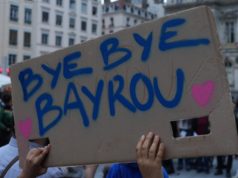Mourou was one of three scientists to share the award presented Tuesday, Oct. 2.
ANN ARBOR, MI — University of Michigan Professor Gerard Mourou is one of three scientists awarded the Nobel Prize in Physics for their groundbreaking inventions in laser physics.
Mourou was awarded for his work alongside Donna Strickland of the University of Waterloo in Canada, who is the first woman to have won a Nobel in three years and is only the third to have won for physics.
Arthur Ashkin of Bell Laboratories in New Jersey, who entered the Nobel record books by becoming the oldest laureate at age 96, shares the award with Morou and Strickland.
Mourou, who is French, of the Ecole Polytechnique, will share half of the prize’s 9-million-kronor ($1.01 million) with Strickland while Ashkin gets the other half.
Mourou and Strickland were awarded «for their method of generating high-intensity, ultra-short optical pulses»
According the Nobel Prize website, Mourou and Strickland paved the way towards the shortest and most intense laser pulses ever created by mankind. Their article was published in 1985 and was the foundation of Strickland’s doctoral thesis.
Using an «ingenious approach,» they succeeded in creating ultrashort high-intensity laser pulses without destroying the amplifying material,» the site notes.
The duo first stretched the laser pulses in time to reduce their peak power, then amplified them, and finally compressed them. If a pulse is compressed in time and becomes shorter, then more light is packed together in the same tiny space — the intensity of the pulse increases dramatically, the site noted.
Strickland and Mourou’s newly invented technique, called chirped pulse amplification (CPA) soon became standard for subsequent high-intensity lasers.
«Its uses include the millions of corrective eye surgeries that are conducted every year using the sharpest of laser beams,» the Nobel Prize site notes. «The innumerable areas of application have not yet been completely explored. However, even now these celebrated inventions allow us to rummage around in the microworld in the best spirit of Alfred Nobel — for the greatest benefit to humankind.»
At UM, Mourou was a founding director of the Center for Ultrafast Optical Science, an interdisciplinary research center in the College of Engineering. He has been the recipient of the Wood Prize from the Optical Society of America and the Edgerton Prize.
Strickland’s award is the first to have gone to a woman in physics since 1963, when it was won by Maria Goeppert-Mayer. The only other one was Marie Curie in 1903.
«Obviously we need to celebrate women physicists, because we’re out there. And hopefully in time it’ll start to move forward at a faster rate, maybe,» Strickland said, according to the Associated Press.
On Monday, American James Allison and Japan’s Tasuku Honjo won the Nobel medicine prize for groundbreaking work in fighting cancer with the body’s own immune system, the AP reported.
The Nobel chemistry prize comes Wednesday, followed by the peace prize on Friday. The economics prize, which is not technically a Nobel, will be announced Oct. 8.






